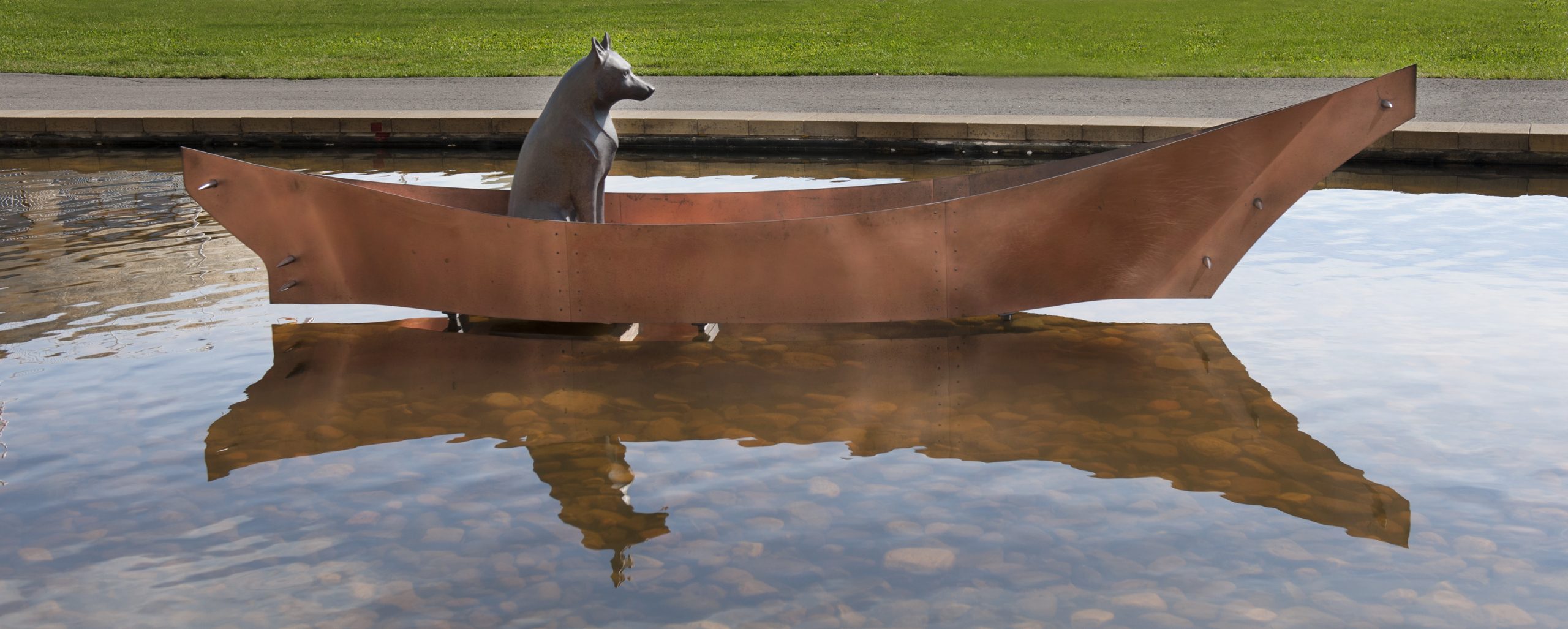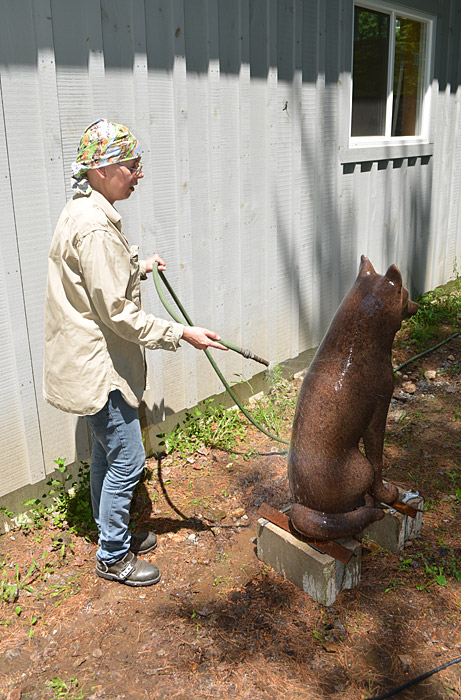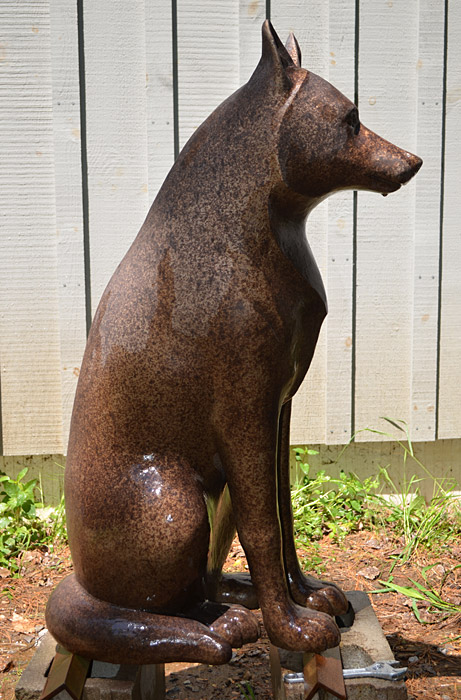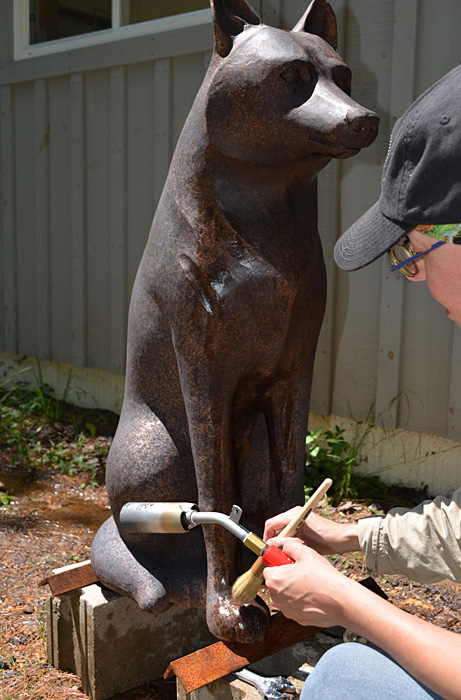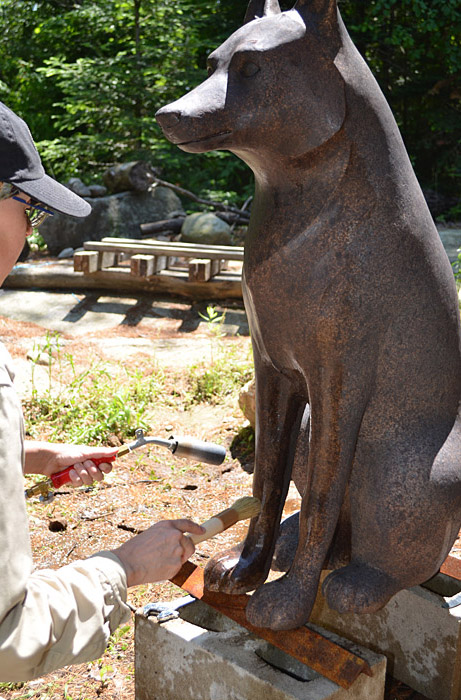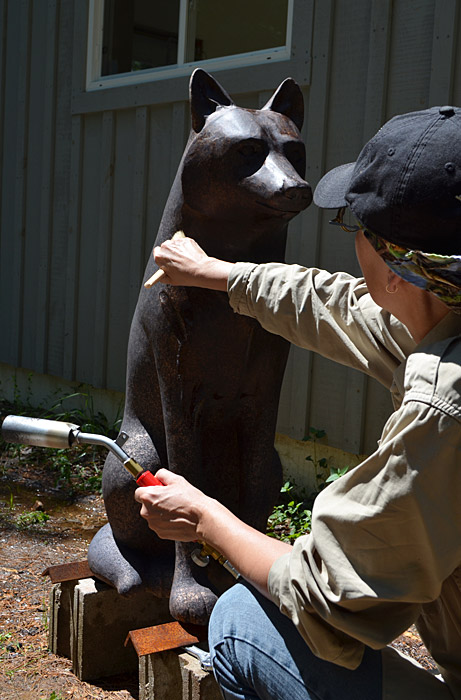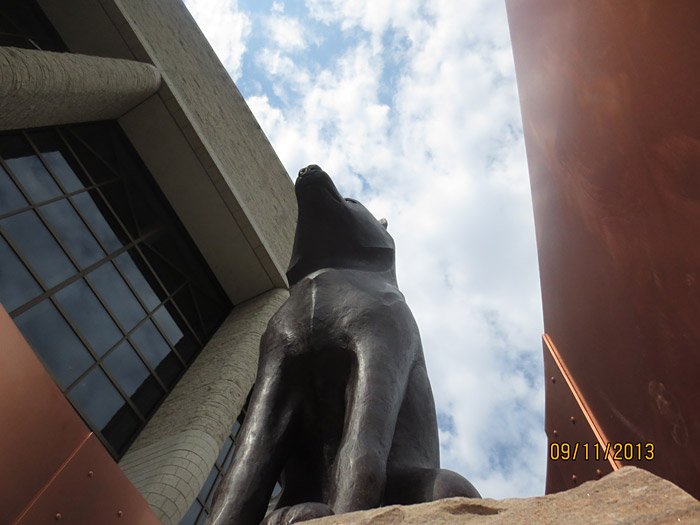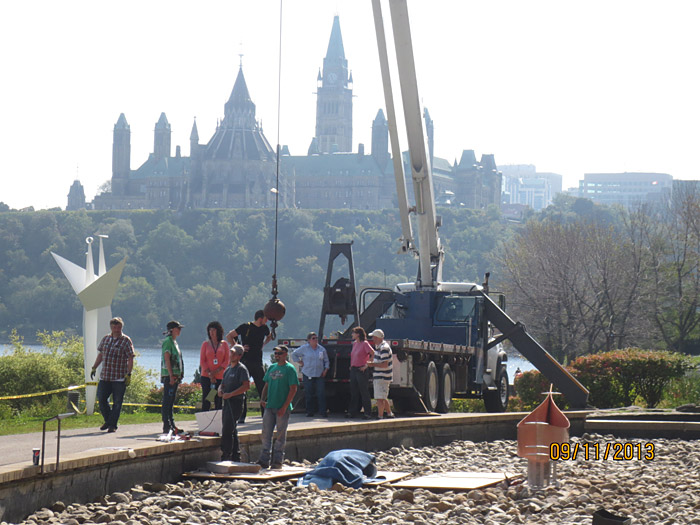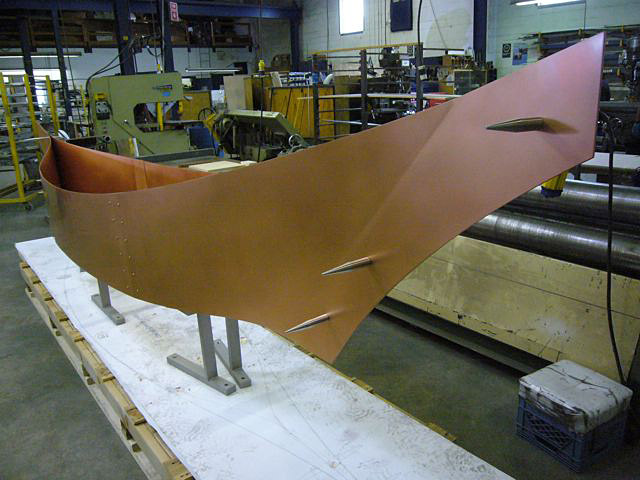'namaxsala (To Travel in a Boat Together)
‘namaxsala is inspired by a story told to the artist, Mary Anne Barkhouse, by her grandfather Fred Cook. In the story, her grandfather helps a wolf cross a treacherous body of water in a boat, on the West Coast of Canada.
My grandfather’s stories always offered an alternative view for considering the world around me,” the artist remembers. “And so, I relate one of them here, to help negotiate cooperation with the ‘other’ and inclusion of the wild.
‘namaxsala reflects on human relationships with the natural world. The choice of copper and bronze speaks simultaneously to Kwakwaka’wakw tradition and contemporary ingenuity. The sculpture also connects with the totem poles and houses installed in the Grand Hall of the Museum.
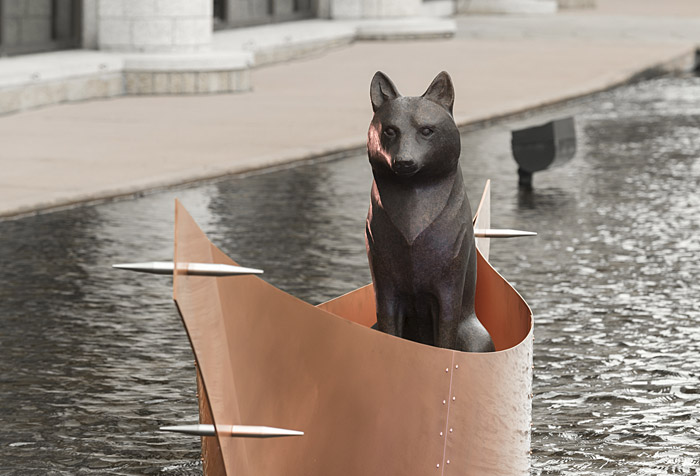
Close-up, ‘namaxsala sculpture
© Canadian Museum of Civilization, Photo: Ryan McCosham
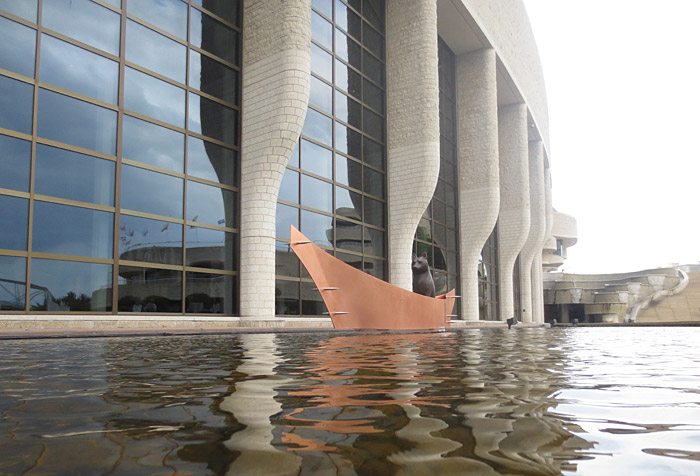
The completed installation
© Canadian Museum of Civilization, Photo: Alain Pro
Mary Anne Barkhouse
Mary Anne Barkhouse was born in Vancouver, British Columbia and belongs to the ‘Namgis band, Kwagiulth First Nation. She is a descendant of a long line of internationally recognized Northwest Coast artists that includes Ellen Neel, Mungo Martin and Charlie James. She graduated with honours from the Ontario College of Art in Toronto and has studied extensively with noted silversmith Lois Etherington Betteridge. She has exhibited widely across Canada and the United States.
Working with a variety of materials, Barkhouse examines environmental concerns and indigenous culture through the use of animal imagery. A member of the Royal Canadian Academy of Arts, Barkhouse’s work can be found in the collections of the National Gallery of Canada, Mendel Art Gallery, MacKenzie Art Gallery, Art Bank of the Canada Council for the Arts, Museum of Anthropology at UBC, Art Gallery of Guelph (formerly the Macdonald Stewart Art Centre), Banff Centre for Arts and Creativity, and the Department of Indian and Northern Affairs. In addition, she has public art installations at the Thunder Bay Art Gallery, McMaster Museum of Art (Hamilton, ON), University of Western Ontario (London, ON), McMichael Canadian Art Collection (Kleinberg, ON), Robert McLaughlin Gallery (Oshawa, ON), Macdonald Stewart Art Centre (Guelph, ON) Haliburton Sculpture Forest (Haliburton, ON) and the Millennium Walkway in Peterborough, Ontario.
Barkhouse currently resides in the Haliburton Highlands of Ontario.
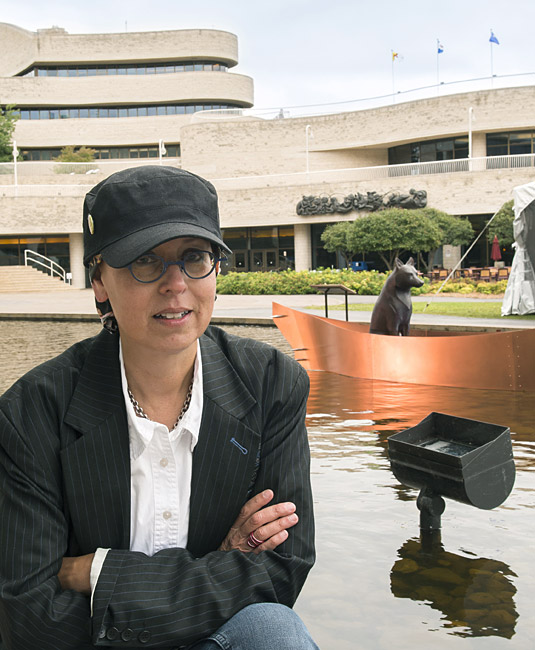
Mary Anne Barkhouse and ‘namaxsala September 13, 2013
© Canadian Museum of Civilization, Photo: Ryan McCosham
The process

John and Bonnie Buhler at the September 13, 2013 sculpture unveiling
John and Bonnie Buhler’s support for the creation of 'namaxsala is dedicated to all Canadians.
John and Bonnie Buhler Foundation Inc., Winnipeg, Manitoba
Mary Anne Barkhouse, ‘namaxsala (To Travel in a Boat Together), 2013, copper, bronze, stainless steel and stone, Canadian Museum of History VII-E-1106
© Mary Anne Barkhouse
Photo: CMH /MCH
